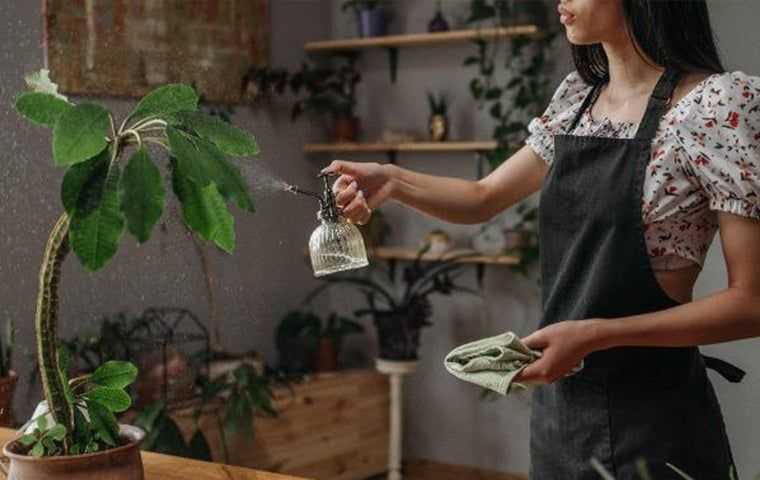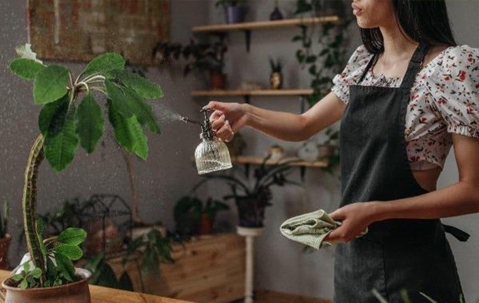What Is Natural Pest Control?

Pest control is increasingly more important in South Florida as pest populations seem to grow every year. There are many different types of pests that home and business owners face here. This year, reports noted that four cities from Florida made the cut for the top 50 Termite Cities in America.
When it comes to pest control in Miami, FL, there are a variety of approaches and many types of pest control. Some of these approaches can result in the use of highly toxic chemicals or other harsh methods. Traditional chemical treatment is not the only option.
Natural pest control is quickly picking up in popularity as a long-term care option for pests. Through common-sense practices and a little bit of patience, these options are quite easy. With the right pest control provider, homeowners have access to safe, natural remedies. While each person’s use-case will be different, eco-conscious and environmentally friendly solutions are fast becoming the norm.
Furthermore, pest management companies can often guide homeowners to maintain pest control naturally through the strategic use of plants to keep off insidious bugs. In addition to this, there are ways to invite specific predators and insects through various means. Through these practices, it is possible to achieve pest care through “biological control.”
There is no shortage of ways in which people are managing to take care of their pest issues with natural means. Still, as a practice, natural pest control is relatively unknown to the general public.
Keep reading to arm yourself with the knowledge necessary to fight mother nature with mother nature!
What is Natural Pest Control?
Natural pest control refers to pest control methods that rely on natural (chemical-free) remedies. From essential oils to fly traps to food grade Diatomaceous Earth, several natural elements can help control the pest population. These solutions are often safe for pets and small children and non-toxic.
Natural Pest Control Process
When deciding that you would like to attack an issue using natural methods, there is a system that can assist in the process. This five-step approach is easily remembered through the acronym CLOAK. This stands for:
Classify
Learn
Observe
Action
Keep Notes
Let’s go through each of these steps in more detail:
Step 1: Classify
The first step in a quest of controlling pests is to classify the pest you’re dealing with. Trying to throw solutions at a problem you don’t understand will result in frustration and failure. Different remedies repel mosquitos that would not work on fruit flies or other insect pests, for example. Also, it’s important to make sure that you aren’t getting rid of beneficial insects.
Step 2: Learn
Now that you know what you’re up against, research it. In the modern digital age, there is no excuse for not learning everything you can about the pest you are wanting to get rid of. In many instances, smartphones can take a simple picture of the pest and classify it, providing links to resources. Through a simple search, the answer to every question is often found in the palm of your hand!
Step 3: Observe
Take some time to observe the nature of the pest. Are they located only in your living space or are they traveling into there from the kitchen? Do they stick around in the long term or are they seasonal or infrequent? Knowing the nature of the pest helps keep you informed of when to take action against them.
Step 4: Action
After this has all happened, it is time to take action. Some of the solutions to do so are below but they will vary depending on the above information.
Step 5: Keep Notes
Keep track of how it went. If something worked, take note. If it didn’t, take note of that too! When a pest is cyclical or seasonal, it can save time and effort to keep track of what did and didn’t work.
Without notes, you may find yourself combing through the internet in search of information you’ve already learned in the past.
Natural Solutions for Controlling Pests
There are several natural solutions for controlling pests. Most of these pests predate the many harmful chemicals we’ve created to combat them. Therefore, it stands to reason that there had to have been methods to treat them before the invention of chemical pesticides.
Some examples of natural solutions for pest control include:
Plants
Companion Planting is one way that people use plants as pest control. This refers to a method of gardening that involves alternating rows of plants with strategic pairing. Planting melons next to radishes, for example, is a good way to prevent beetles from getting your entire crop of melons as they do not like radishes. This allows the siloing of crops to manage potential losses.
Additionally, some plants are helpful deterrents for pests. Onions and garlic are good crops to plant around the outside of a flower bed for this reason.
Predators
Predators are the animals and birds that eat insects. This method is commonly referred to as "biological control." Some insects also fit this category. Predators are why it’s important to classify your problem before taking action. If the pest you are getting rid of is a predator, you could be doing more harm than good.
In addition to not driving out predators, it is also possible to attract some of them to your yard. Those who want to may attract birds through birdseed or certain plants. Toads can eat thousands of insects each month and enjoy certain shelters that some craft in the garden area. Spiders are often drawn to certain plants as well.
Natural Pesticides
Natural ingredients mixed in a spray bottle can deter certain unwanted pests. In some cases, mixing equal parts or even less of essential oils and water alone is enough. These solutions can often provide long-term protection from pests without the use of harmful chemicals.
Physical Control
There are a few different elements of physical control. The first element is the ability to apply physical barriers to keep out pests. These can be fences, shrubbery, or certain plants to control a pest’s ability to get in. People may do this in many different ways and the pest you are dealing with can make a big difference.
The other element of physical manipulation is your ability, as a physical person, to pick off the pests. This is a process that can be more cumbersome than spraying a chemical or putting up a fence but many pests can be simply removed by hand.
Professional Pet-Safe Pest Control
South Florida is certainly not without its pest issues. Miami is currently ranked #4 for cockroach infestations. Anyone who has spent a significant amount of time in the area knows that this pest, and many others, are a pain to deal with. However, infestations are manageable with the right approach.
When dealing with infestations, it’s best to get somebody on your side with the expertise and equipment you need. Native Pest Management is an experienced pest control solution that operates out of the South Florida area and is here to help. We leverage several pest treatments options, including biological pest control and natural repellents.
We also provide preventative pest control to help you address common pest hazards. For example, we may identify and suggest changes, like addressing standing water that fruit flies lay eggs in. Our dedicated team of professionals has experience in all forms of pest control, including pet-safe and natural pest control.
Request a quote today online or call us at (754) 354-5252. One of our experts would love to walk you through the options for dealing with whatever infestation or issue you may be experiencing!
